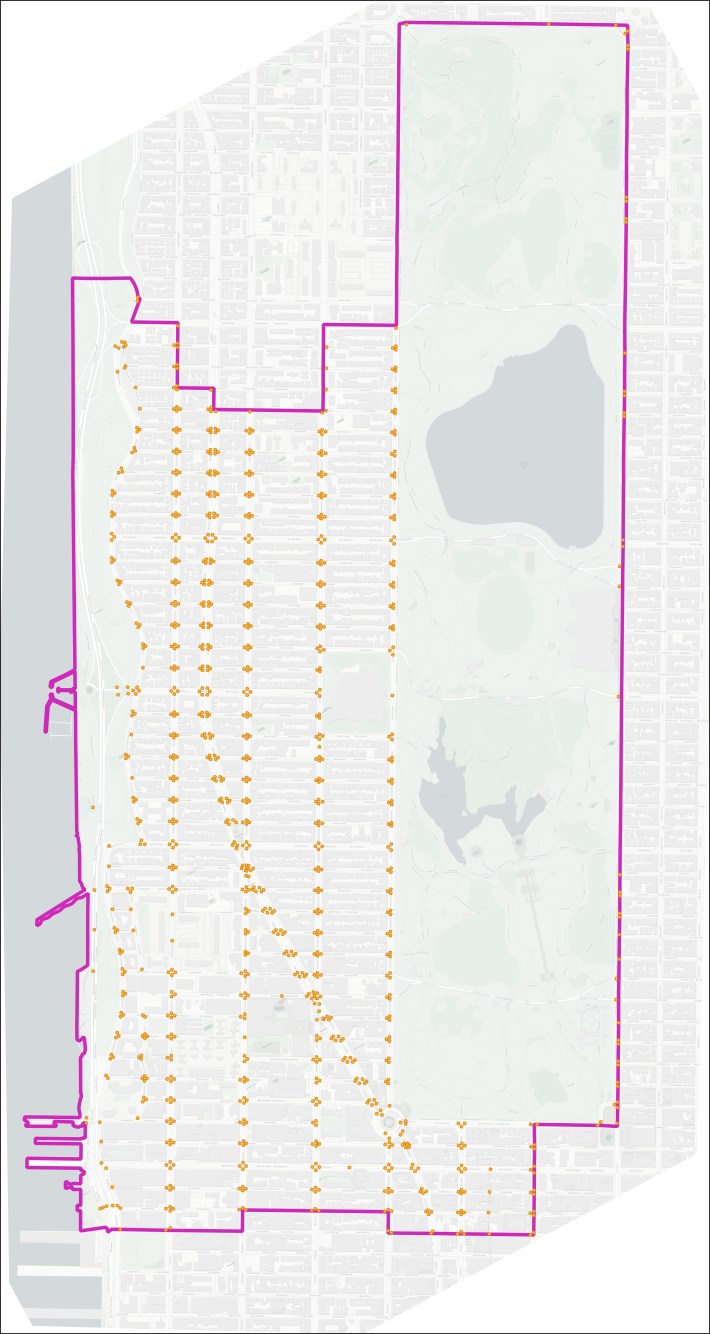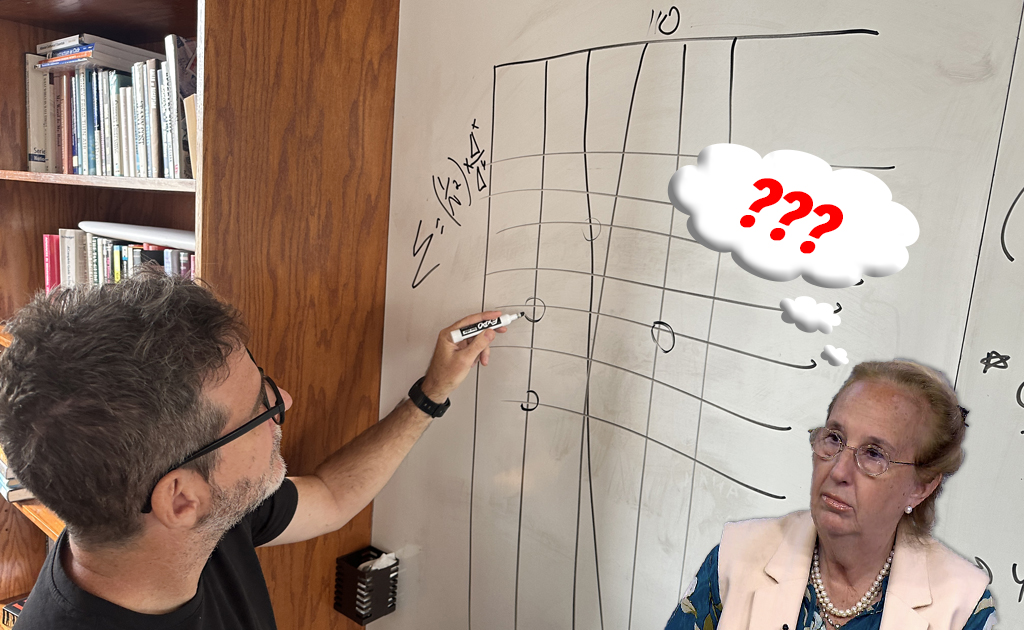Street safety advocates pilloried an Upper West Side pol for backtracking on a bill to ban parking at intersections for better visibility – also known as daylighting – while calling out the Department of Transportation for fear-mongering by telling lawmakers that large numbers of parking spots would be taken from the driving minority.
Council Member Gale Brewer yanked her support for Intro 1138 this week after DOT Commissioner Ydanis Rodriguez wrote an op-ed in the Daily News reiterating the agency's opposition to universal daylighting, claiming that it would "dramatically" cut back on parking and that the well-established design "adds danger."
After reading the op-ed, Brewer reached out to DOT officials, who told her that Council districts could indeed lose as many as 13,000 car storage spaces in the public right-of-way to enable the city to clear corners. That prompted the flip-flop, the latest example in an ever-growing saga of the self-described progressive lawmaker caving to car-focused constituents.
Activists were furious — not only because they objected to DOT's claim that daylighting makes intersections less safe, but because Brewer's district would actually lose far fewer parking spaces which car owners fight so hard to defend.
"This bean-counting street safety just really lets down the constituents who don’t have the time or the resources to constantly be in the face of their elected officials," said Carl Mahaney, director of the local advocacy group StreetopiaUWS, which shares a parent company with Streetsblog. "It really seems like Gale Brewer is making policy decisions based on the people who are screaming at her the loudest — and those people often come with a very narrow grievance driven agenda. It’s irresponsible."
Inflated data
The eye-watering 13,000 parking loss that officials provided to Brewer this week stood out for being twice the 6,500 average spots per district that agency leaders previously gave the Council under oath at an oversight hearing in April, and is more than some estimates of nearly all spots in the entire neighborhood.
There are only about 12,300 free curb car spots total on the entire Upper West Side, the late Donald Shoup – arguably the nation's foremost expert on parking policy and the author of the book, "The High Cost of Free Parking" – estimated last year.
"The 13,000 number is just jaw-droppingly out of scale," Mahaney said.
Mahaney hand-counted the intersections in Brewer's Sixth Council District, multiplying them by the maximum eight spots near each of four corners, producing a total of around 2,080 potentially removed spots.

Taking away some of those that are already daylit, such as with fire hydrants, bike racks, bus stops, or No Standing zones, the range is 1,500 to 1,800, the uptown advocate concluded. (A similar hand-count by activist Guillaume Rischard put the number closer to 1,200 — see graphic of Brewer's district, right.)
"The reality is a much-less scary number," Mahaney said. "Wouldn't the constituents trade that number for safer streets?”
DOT's press office had declined to comment for Streetsblog's initial story about its threat to Brewer about 13,000 repurposed parking spaces. Then, after Streetsblog reached out a second time to share Shoup's and Mahaney's calculations, spokesperson Vin Barone claimed that the agency "never estimated or communicated that 13,000 spaces would be lost to universal daylighting in Council District 6."
The rep confirmed that the agency is sticking with its 6,500-spots-per-Council-district average, with some districts, such as one in southeast Queens, losing up to 13,000. That district, however, is represented by the Council's Transportation and Infrastructure Committee Chair Selvena Brooks-Powers, who strongly supports the daylighting bill.
DOT now claims that Brewer's district would lose "roughly 2,800" spots, though Brewer never mentioned that number to Streetsblog. And in any event, that figure is still 720 spots above Mahaney's maximum estimate. DOT's press office declined to provide its methodology for arriving at a higher stat or explain the discrepancy.
Brewer asserted her flip-flop was not about parking at all, saying she is satisfied with a 2023 Council law that requires officials to ban parking at only 100 crossings a year – a rate at which it would take around 400 years to cover the city's 40,000 intersections.
"I voted for Local Law 66 of 2023 [and] it is my understanding that DOT is actively implementing this law," Brewer told Streetsblog in a statement.
When asked about her pivot at a community board meeting on Tuesday night, Brewer said New Yorkers could still request specific locations they deemed dangerous.
"I trust the Department of Transportation engineers, and they felt that [the universal daylighting proposal] was just too general, basically that every single corner would end up being daylit," Brewer told Manhattan's Community Board 4. "I would support any situation where it is necessary, because there’s been some 311 calls or the community feels that it’s an unsafe corner. But to put it on every single corner, which is what this bill calls for, did not make sense."
However, the city has a history of overstating its own daylighting progress and responding slowly to actual complaints about trouble intersections.
After the killing of 7-year-old Kamari Hughes by an NYPD tow truck driver at a poorly visible intersection in Fort Greene two years ago, Mayor Adams vowed to ban parking near 1,000 intersections, exceeding the Council's requirement ten-fold, but Department of Transportation then diluted the benchmark after the fact to say it would merely add daylighting to 1,000 "locations," a year.
To advocates, DOT's rationale is simply not ambitious enough.
"It’s a glacial pace, it’s just too few intersections," said Eric McClure, Executive Director of the street safety-focused political action committee StreetsPAC. "The data across other cities shows that doing it universally improves safety."
Residents' requests for daylighting at specific locations also often fall on deaf ears.
Just requested daylighting for my corner (Newtown Road in Astoria) for the 100th time, because I almost get hit by a car there daily. The visibility is *illegal* by federal standards. But instead of fixing it—you know, like every other city has—this is New York City's status quo.
— John Surico (@JohnSurico) October 1, 2025
The daylighting bill's author, Queens Council Member Julie Won, angrily tweeted at the DOT on Tuesday to remind the agency that intersections still represent a major safety issue:
The majority of 253 traffic deaths last year in NYC took place at an intersection. Death after death, every intersection that DOT drags their feet to daylight more New Yorkers die. (1/2)
— cmjuliewon.bsky.social (@CMJulieWon) September 30, 2025
Brewer also chalked up her change of heart on DOT's questionable case that it's safer to have a car blocking visibility at a corner than an empty space, since some drivers would take advantage of the space to make careless turns.
The reasoning rests on a flawed study DOT published early this year that the report's authors themselves admitted couldn't definitively conclude that parking-free corners caused an increase in crash injuries.

Other cities — Hoboken, Hong Kong, Lima, Montreal, the list goes on – have documented safety boosts when cars don't park up close to an intersection.
"The data across other cities shows that doing it universally improves safety," McClure said. "Why they [DOT] are pushing back so hard on this, I don’t get."
A mixed record
Brewer has a long and varied history on livable streets over her more than two decades in office, including her first stint in the Council starting in from 2002-2013, followed by her time as Manhattan borough president after that, and back to the Council in 2022.
Livable streets activists slammed the pol for backpedaling yet again on the daylighting proposal on Tuesday, especially after Brewer said that the city should implement the policy at corners where someone has been killed.
"Is @galeabrewer really suggesting that we wait to improve the safety at intersections until after a New Yorker is killed," posted Transportation Alternatives Executive Director Ben Furnas on X.
Is @galeabrewer really suggesting that we wait to improve the safety at intersections until after a New Yorker is killed? pic.twitter.com/KFZoTawZeL
— Ben Furnas (@bfurnas) September 30, 2025
It marked one of several cases where the pol at first supported, then withdrew her backing from livable streets priorities in her district in recent years, checkering a lengthy track record in public office that had some notable bright spots.
During her first run on the Council she was an early booster for congestion pricing in 2006, introduced legislation to ban cars from Prospect and Central parks in 2011.
As borough president, she pushed back against reopening parts of Times Square to cars, stumped in favor busways downtown, and advocated repurposing parking for street seating in the early days of the Covid-19 pandemic. She also joined letters urging Gov. Hochul to advance congestion pricing in 2021.
That was among the reasons she nabbed the endorsement from StreetsPAC in 2021, which cited her pledge to fight for more open streets funding and expanded bus priority lanes.
During her latest term on the Council, she has introduced bills to better regulate the sale and storage of e-bike batteries, and has come out against NYPD Commissioner Jessica Tisch's criminal summons crackdown on people riding those devices.
However, she has bowed to vocal critics of e-bikes like the NYC E-Vehicle Safety Alliance, and has flipped from opposing to supporting a bill to register e-bikes after receiving a barrage of "nasty emails." Brewer also got on board with a bill to ban e-bikes in parks, another demand from groups like the EVSA.
The organization, which claims to elevate "victims and potential victims … of rogue e-vehicle riders," also hopped on board the anti-daylighting train recently, sending out an email blast two weeks ago in hopes of blocking the daylighting bill, urging their supporters to call their elected officials and demand they stop the "horrible" legislation, noting that "even the NYC DOT" was against it.
The group's alignment with the city DOT is unusual, given that it routinely opposes street safety measures backed by the DOT and rails against Commissioner Rodriguez, for example, posting recently on social media that he "lies all day long to push the agenda of the corrupt big lobby," in reference to a contested redesign of 31st Street in Queens.
Brewer also initially liked a modest pilot program to reform curb parking along 14 blocks of the neighborhood, before she asked the Adams administration's First Deputy Mayor Randy Mastro to pull the plug on it last month.
And, after running on a record of boosting busways like on 14th Street, 34th Street and 181st Street, Brewer threw those bonafides out the window by standing with opponents trying to tank a dedicated bus lane on 96th Street last year.
Brewer's district has among the lowest car-ownership rates in the nation, with 72.4 percent of households not having a motor vehicle, according to U.S. Census data mapped by Transportation Alternatives and the Massachusetts Institute of Technology.
Reducing the number of available parking spaces in an area like this would add the extra benefit of discouraging car ownership even further.
But the high-density neighborhood has missed out on forward-looking street designs for years, with little to show for since the city installed the protected bike lane on Central Park West in 2019, Mahaney said.
"The Upper West Side has not changed materially," he said. "We see transformations happening in other places of New York City, and a lot of her constituents are asking why can’t we have this."
"It shows a fealty to drivers, to people who park their cars, over the vast majority of her constituents, and it’s just really surprising and disappointing," Mahaney added.






